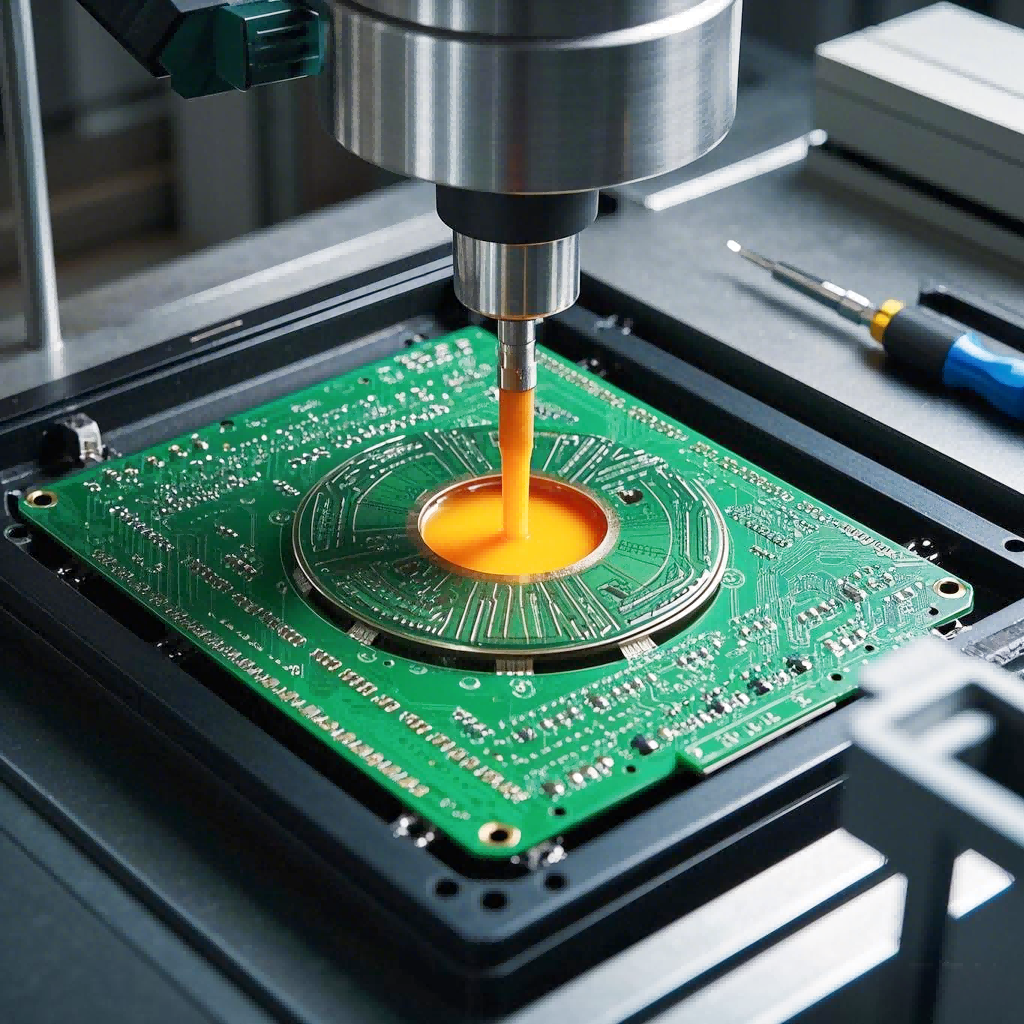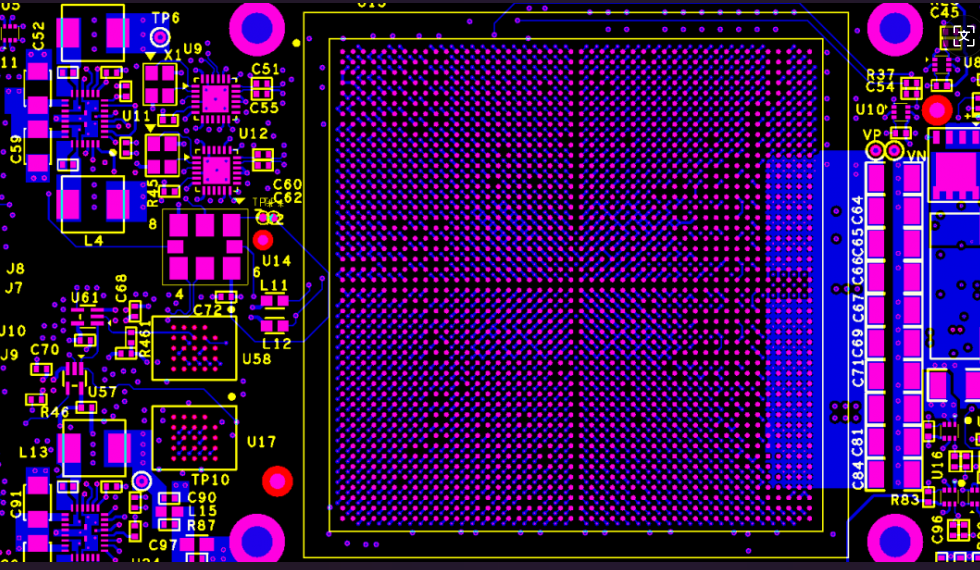Search
Unraveling the Intricacies of Resin Plugging in PCB Design and Production
- Jan 10,2025
-
Share
Hey, esteemed PCB enthusiasts and industry mavens! Welcome back to our blog, where today we're embarking on a deep dive into the captivating domain of resin plugging, a specialized technology that holds the reins in modern PCB design and production. At Shenzhen Huaruixin Electronics Co., Ltd., we've honed this craft over years of painstaking practice, and we're eager to spill the beans and share our wealth of insights with you.

1. The Pivotal Role of Resin Plugging in PCB Applications
Resin plugging has ascended to become an indispensable cog in the wheel of diverse PCB scenarios. In high-density interconnect (HDI) PCBs, the veritable nerve centers of today's compact and high-performance electronic gizmos, resin plugging is nothing short of a wizard. Picture the latest smartphones inundating the market. These devices clamor for elaborate circuitry and minimal spatial footprint. Resin plugging facilitates the seamless occlusion of microvias, leveling the playing field for subsequent copper plating. This not only supercharges the electrical conductivity but also wards off short circuits that could otherwise wreak havoc on these densely populated boards. For instance, in the production of a flagship smartphone model, our ace team at Shenzhen Huaruixin Electronics Co., Ltd. executed resin plugging to a tee. By funneling a meticulously formulated resin into the microvias, we empowered the PCB to underpin high-speed data transfer and complex power management, all while maintaining a svelte, wafer-thin silhouette.
Another prime application unfolds in the automotive electronics arena. With vehicles hurtling towards electrification and connectivity, PCBs in cars must brave harsh environs. Resin plugging rides to the rescue by erecting a stout barrier against moisture, dust, and chemical contaminants. In a recent project for an electric vehicle's power control unit, we harnessed resin plugging to shield the vias, ensuring unfaltering operation even when pitted against extreme temperatures, vibrations, and the corrosive onslaught of road salt.
2. Key Considerations When Implementing Resin Plugging
a) Resin Selection: The Bedrock of Success
Picking the apt resin is the linchpin of a triumphant resin plugging maneuver. Different resins brandish a kaleidoscope of properties. Viscosity reigns supreme as a critical determinant. For PCBs sporting ultra-fine microvias, a low-viscosity resin is non-negotiable to guarantee its effortless infiltration deep into the holes sans clogging. Conversely, for larger vias in industrial-grade PCBs, a more viscous resin might be the preferred choice to confer enhanced mechanical strength.
Curing time and temperature stipulations also diverge. In consumer electronics like tablets, where production velocity is of the essence, a resin sporting a rapid curing time and relatively low curing temperature was handpicked. This expedited manufacturing without skimping on quality. On the other hand, for aerospace applications, where reliability reigns supreme, a resin with a slow, precisely regimented curing process was enlisted to vouchsafe long-term stability in the harshest of climes.
b) Hole Preparation: Laying the Groundwork
Proper hole preparation is tantamount to laying a sturdy foundation for a skyscraper. The vias and microvias must be scrupulously cleansed and etched. Any residual debris or oxides can grievously impede the resin's adhesion. In a high-end medical device PCB we fabricated, a multi-step purging process was instituted. First, a chemical degreasing was carried out to expunge any organic contaminants. Then, a micro-etching step roughened the hole walls, fashioning a more receptive surface for the resin. This fastidious attention to detail ensured that the resin bonded tenaciously, precluding any delamination or void formation.
c) Curing Process: Striking the Golden Mean
Controlling the curing process is a finicky art. Under-curing begets a resin that's soft and deficient in mechanical strength, while over-curing can render it brittle and prone to cracking. In the production of a satellite communication PCB, where reliability in the vacuum of space is non-negotiable, we devised a bespoke curing protocol. By meticulously calibrating the temperature, time, and even integrating UV light exposure at certain junctures, we struck the perfect balance. The resin-filled holes could withstand the rigors of launch vibrations and the extreme temperature oscillations in orbit.
3. Tips and Best Practices for Resin Plugging Success
a) Void Prevention: A Crusade Against the Invisible
Voids lurking within the resin-filled holes can doom PCB functionality. To counter this, a vacuum-assisted resin injection stratagem proved immensely efficacious. In the production of a high-performance gaming laptop PCB, we applied a vacuum to suck out any air bubbles that could potentially spawn voids prior to the resin curing. Additionally, gentle agitation of the resin during mixing ensured a homogenized blend, minimizing air entrapment.
b) Adhesion Enhancement: Forging an Indestructible Bond
Poor adhesion can precipitate resin detachment from the hole walls, compromising the integrity of the PCB. In a military-grade radar PCB project, we incorporated a silane coupling agent into the resin formulation. This chemical maestro fortified the bond between the resin and the copper surfaces within the holes, providing a rock-solid fill that could weather the intense vibrations and shocks endemic to military applications.
c) Cost Optimization: Making Every Penny Count
Resin plugging can morph into a costly escapade if not managed shrewdly. For mass-produced consumer electronics such as smartwatches, we adopted a bulk resin purchase blueprint. By procuring in large quantities, we slashed the cost per unit of resin. Moreover, streamlining the production process to obliterate waste and optimize curing times further pared down the overall outlay.
4. Selecting the Optimal PCB Materials for Resin Plugging
When it comes to cherry-picking PCB materials amenable to resin plugging, several factors come into play. The coefficient of thermal expansion (CTE) is a cardinal consideration. In PCBs slated to endure significant temperature vacillations, like those in industrial control systems, a material sporting a closely matched CTE to the resin is vital. This precludes delamination due to differential expansion.
The surface roughness of the PCB material also counts. A somewhat rougher surface can augment the adhesion of the resin, but excessive roughness can impractically augment the difficulty of subsequent processes. In the design of a renewable energy inverter PCB, we opted for a material with an optimal surface roughness that lubricated resin plugging while permitting smooth copper plating and etching.

5. Let's Connect and Conquer the PCB World Together
At Shenzhen Huaruixin Electronics Co., Ltd., we take pride in being a vanguard in PCB design, production, and sales. Our prodigious experience in resin plugging and other advanced PCB technologies positions us as your go-to ally. Whether you're a fledgling startup brimming with innovative concepts or an established enterprise seeking to optimize your PCB processes, we're here to offer our savoir-faire. Let's initiate a dialogue, share our knowledge, and take on the challenges of the future in the exciting world of PCBs. Until next time, keep exploring and innovating!

Let’s talk! We’ll provide the perfect solution for you!
-
 Huaruixin Electronics mainly produces printed circuit boards as the core business, to provide customers with one-stop solutions for FPC/PCB production, components sourcing and Assembly.
Huaruixin Electronics mainly produces printed circuit boards as the core business, to provide customers with one-stop solutions for FPC/PCB production, components sourcing and Assembly. - WHAT WE DO — PCB Design Solutions — Flex PCB Production — Components Sourcing — FPC&PCB Assembly
- PRODUCTS — Single Sided Flexible Circuits — Double Sided Flexible Circuits — Multilayer Flexible Cirucits — Rigid-Flex Circuits — FPC Assembly — PCB Assembly
- CAPABILITY — FPC Capability — Rigid-Flex Capability — PCB Capability — Assembly Capability
- Copyright © 2024 Shenzhen Huaruixin Electronics Co., Ltd. All Rights Reserved.
- Design By BONTOP


